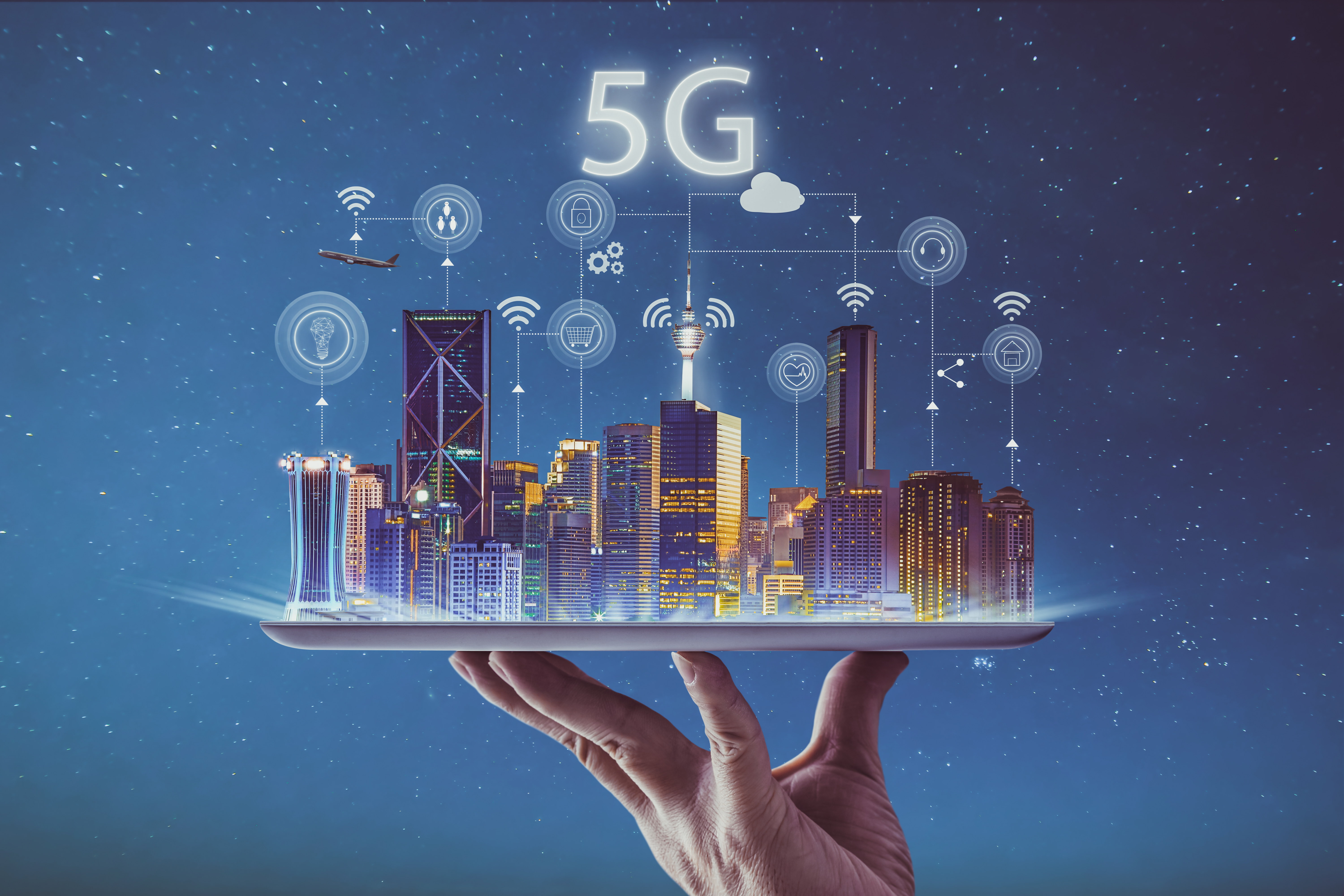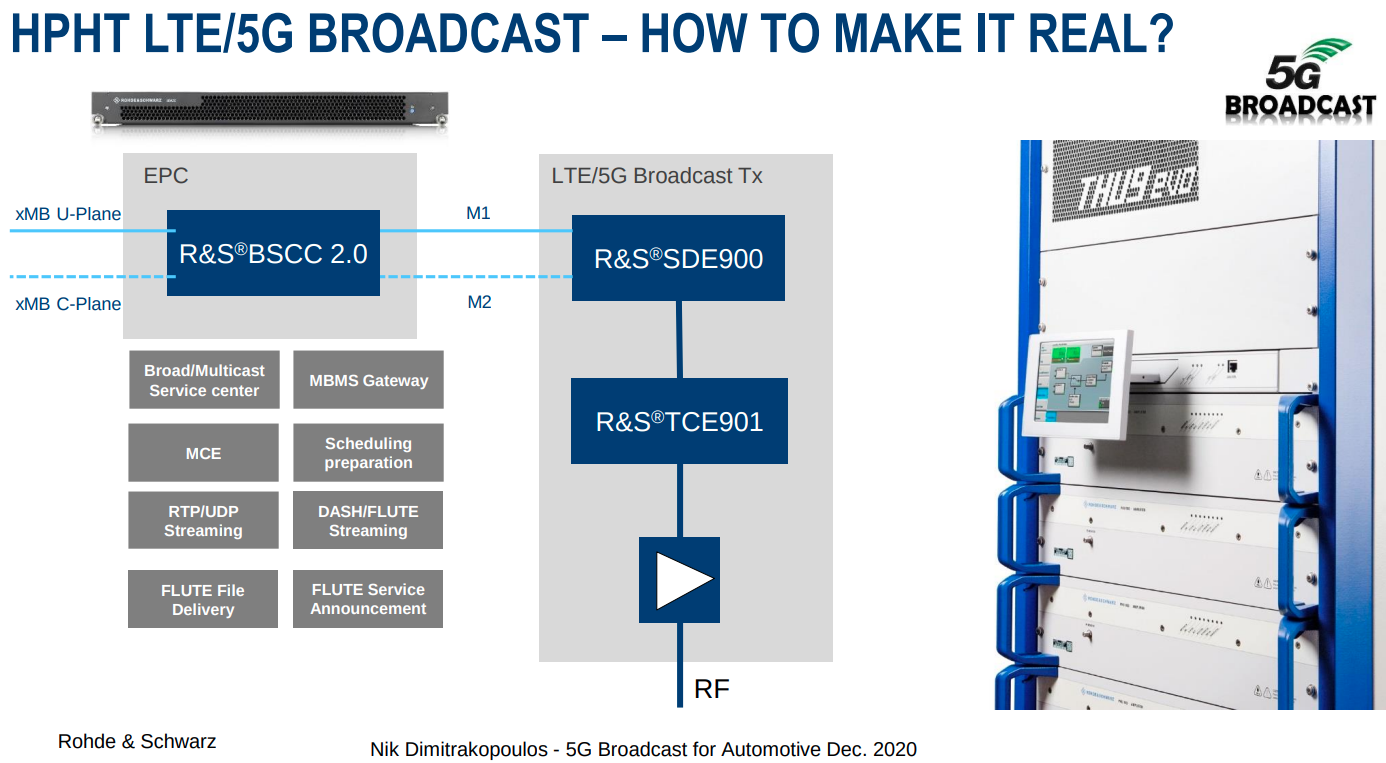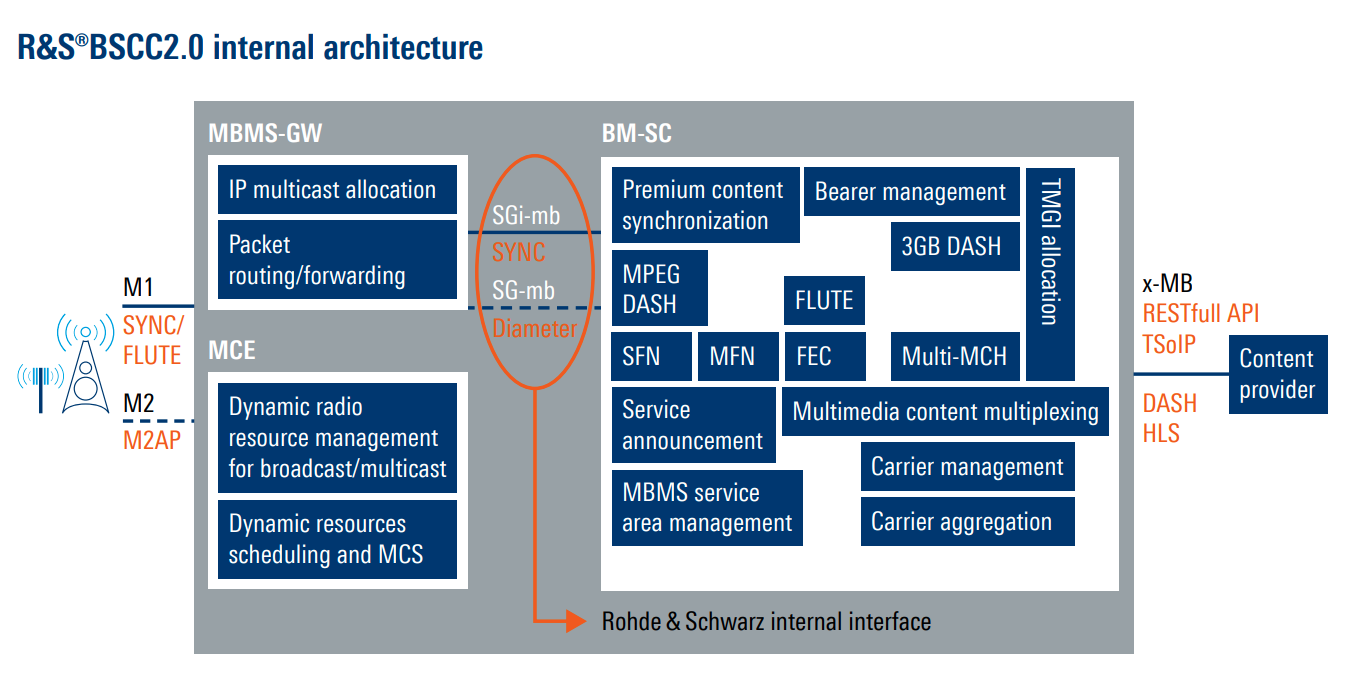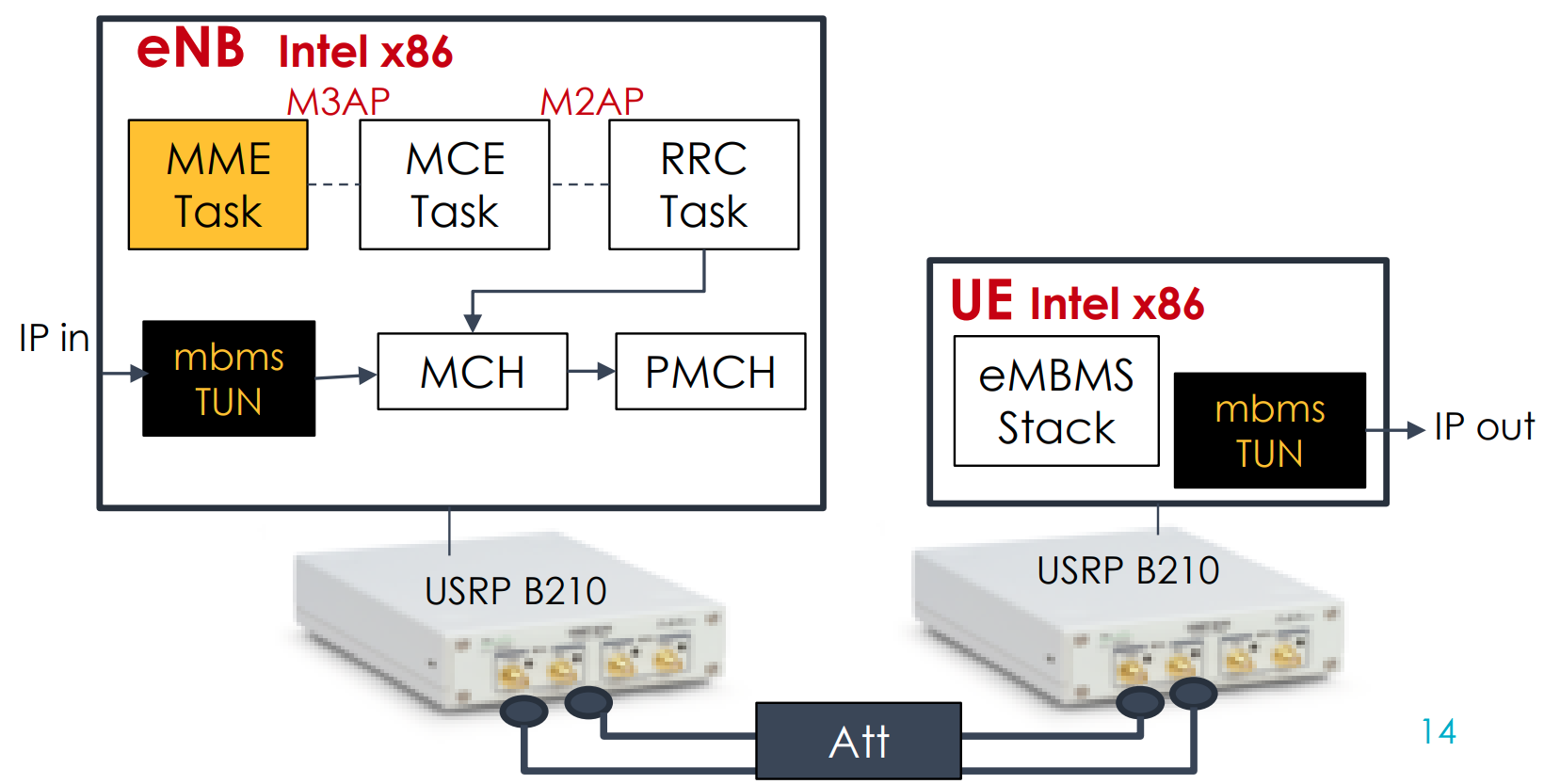
Interest in over-the-air reception of TV in the U.S. continues to grow as evidenced by sales of antennas, with CTA estimating that the total antenna marketplace in the U.S. will exceed 53 million homes by 2025. While the ATSC 3.0 build out continues, a new concept, “5G Broadcast” is now being considered as another option for high-power, high-tower “next generation” TV broadcasting.
There is already one experimental 5G Broadcast station on the air (WWOO-LD in Westmoreland, NH, announced in July), and broadcasters in other parts of the world are testing 5G Broadcast deployment.
Will it replace ATSC 3.0 as the “next generation” broadcast technology? The major factor, in my opinion, will be whether or not consumers and broadcasters drop over-the-air TV in favor of streaming programming over the internet.
5G Broadcast is targeted primarily at mobile devices, where data capacity for video distribution is still a concern. Consumer adoption of ATSC 3.0, so far, has been limited to fixed TV sets. While more people are cutting the cord and discovering (or rediscovering) over the air broadcasts, far more of these sets are connected to the internet alone than to antennas.
Will wireless operators, who largely control distribution of mobile devices in the U.S., allow reception of 5G Broadcasting without a government mandate? If there is a government mandate, perhaps that mandate could require ATSC 3.0 devices instead.
That raises some questions: Which technology is better? Which is easier to implement? I’ll provide some information and links to resources to help you answer those questions.
A 3GPP Standard
5G Broadcast today is defined in 3GPP Release 17 (for an overview on the evolution of 5G Broadcast within 3GPP, check “Broadcast, multicast technologies,” by Dongwook Kim, 3GPP MCC.
The professional video industry's #1 source for news, trends and product and tech information. Sign up below.
The current standard has features that support high-power, high-tower broadcasting. These include Receive-Only-Mode (no SIM card required) and a cyclic prefix of up to 200 microseconds, allowing larger distances between sites in a single frequency network (SFN).
The major components of the 5G Broadcast signal are the CAS (cell acquisition subframe) which contains the PBCH (physical broadcast channel); PDCCH (physical downlink control channel), and the PDSCH (physical downlink shared channel) necessary to decode the PMCH (physical multicast channel). In order to receive a 5G Broadcast signal, a receiver must be able to decode the PBCH, the PDCCH, the PDSCH, and the PMCH.
The PBCH, PDCCH and PDSCH are control channels that can be compared to the bootstrap, L1-basic and L1-detailed in ATSC 3.0, while the PMCH is similar to the PLP subframe in ATSC 3.0. The coding and modulation of these components determines the robustness and capacity of the system.
More information on the 5G Broadcast physical layer is available in “ETSI TS 103 720 Technical Specification” and in the IEEE Transactions on Broadcasting paper “Evaluation of ATSC 3.0 and 3GPP Rel-17 5G Broadcasting Systems for Mobile Handheld Applications.”
5G Broadcast Hardware/Software
Rohde and Schwarz has developed a 5G Broadcast platform that has been used for tests around the world. Fig. 1, taken from the company’s “5G Broadcast for Automotive” presentation by Dr. Nik Dimitrakopoulos, shows a R&S BSCC2.0 (broadcast service and control center) feeding a R&S SDE900 (the same model number unit used for ATSC 3.0 signal generation) into a TCE901 exciter and THU9evo transmitter.
With the exception of the BSCC2.0, this configuration will be familiar to U.S. broadcasters. Fig. 2, from the BSCC2.0 product brochure, shows the internal architecture of that unit.
The OpenAirInterface5g initiative has developed software that will run on a UHD/USRP based SDR. The last information I have on this is from 2019 for a configuration based on 3GPP Release 14. Details are available in the “FeMBMS/eMBMS E2E Prototyping using OpenAirInterface5G” presentation by Javier Morgade at Vicomtech.
Fig. 3 shows a system using two Ettus B210 SDRs, the same model used in the GNU Radio ATSC 3.0 transmitter I described in a previous article.
Comparing 5G Broadcast and ATSC 3.0 Performance
As in the 5G Broadcast system described earlier, ATSC 3.0 has elements that allow receivers to lock to the channel, get information on how to tune the channel, and decode the data. How these elements are implemented affects performance under different conditions.
Table XI in the IEEE Transactions on Broadcasting paper Evaluation of ATSC 3.0 and 3GPP Rel-17 5G Broadcasting Systems for Mobile Handheld Application shows ATSC 3.0 performance gains for TU-6, India-Urban, India-Rural, and Seoul-SFN-3 channels for ideal estimation and linear estimation at speeds of 3, 40, and 120 km/hr.
Performance gain of the ATSC 3.0 bootstrap versus 5G PBCH varied from a worst case -4.1 dB for linear estimation of a TU-6 channel at 120 km/hr to a best case +10.5 dB for linear estimation of the Seoul-SFN-3 channel at 3 km/hr. Bootstrap performance was better than PBCH in 20 of the 24 scenarios.
A comparison of PDSCH versus L1-Detail showed ATSC 3.0 performance gain varied from -3.0 dB to +5.0 dB. PDSCH was undecodable in 3 of the 24 scenarios. L1-Detail was worse than PDSCH in 8 of the 24 scenarios, although in six of these the difference was less than 1 dB.
When comparing ATSC 3.0 subframe with PMCH, the subframe performed better at 5 Mbps, 10 Mbps and 15 Mbps in every channel, with PMCH undecodable in 8 of the 24 scenarios at 15 Mbps. The performance gain ranged from +15 dB linear estimation in a 10 Mbps TU-6 channel at 120 km/hr to +0.6 dB ideal estimation at 10 Mbps at 3 km/hr and 40 km/hr in an India-Rural channel.
The study presented in the IEEE paper explains the ATSC 3.0 performance gain comes from the superiority of its BICM (bit interleaved coded modulation) components and, depending on the propagation channel, the time interleaver. The bootstrap performs worse than PBCH in non-line-of-sight channels with high mobility but otherwise bootstrap has better performance. In the comparison of PDSCH, L1-Detail performed better over line-of-sight but PDSCH was able to take advantage of the diversity provided by combining two PDSCH in non-line-of-site situations.
Practical Implications: 5G Broadcast vs. ATSC 3.0
Broadcasters have ATSC 3.0 transmission infrastructure, but at this time don’t have consumer equipment beyond fixed TV sets and gateway devices. Qualcomm is adding 5G Broadcast support to its mobile device chipsets but no devices supporting 5G Broadcast are currently available to consumers. Prototype devices are available for both standards. When will consumers be able to purchase these devices?
ATSC 3.0 broadcasts are already on the air in more than 70 markets in the United States. Currently there is only one 5G Broadcast station in the U.S., the experimental LPTV mentioned earlier. The 5G Media Action Group’s web site has details on 5G Broadcast trials as well as links to a GITHUB with 5G Broadcast reference tools. Expect to hear more about 5G Broadcast deployments around the world at the 2023 IBC Show.
5G Broadcast can build on existing modems and 5G mobile device components. This should make it relatively easy for manufacturers to implement in mobile devices. ATSC 3.0 has an incompatible physical layer and requires additional hardware, which implies extra cost for mobile devices. Many ATSC 3.0 performance advantages come from time-interleaving which requires more memory. I’m not aware of 5G capability in any TV set. If 5G Broadcast is required in TV sets, what will that cost?
The IEEE Broadcast Transactions paper shows ATSC 3.0 has a significant cost advantage for network deployment—fewer transmitters are required for equivalent or better coverage. Will that matter in the U.S.?
5G Broadcast & ATSC 3.0 Together
What if we end up in a scenario where 5G Broadcast is available on newer mobile devices but not in TV sets and ATSC 3.0 is available in TV sets but not on mobile devices? What about automobiles? We’ve seen interest in using ATSC 3.0 for delivering content to automobiles and as shown in the IEEE paper, ATSC 3.0 has a performance advantage there, but if 5G wireless devices are already in the vehicle, that may give 5G Broadcast an advantage.
One solution would be for a TV station to transmit both 5G Broadcast and ATSC 3.0 on the same channel. This would require using time division multiplexing (TDM) to share the channel. I described the demonstration at the 2023 NAB Show in my two-part review of the show in my June and July columns.
Without new spectrum, I don’t expect a significant number of 5G Broadcast signals on the air in U.S. broadcast bands until enough ATSC 1.0 spectrum has transitioned to ATSC 3.0."
For this to work, either or both the ATSC 3.0 or 5G Broadcast standards will require changes to their frame structure. Given the number of ATSC 3.0 TV sets already in use, any change to that standard will have to be compatible with existing TV sets.
Will it Become a Reality?
FCC rules require broadcasters to deliver at least one free channel to the public in standard definition. During the transition to ATSC 3.0, the FCC has required broadcasters to ensure programming remains available to all viewers, including simulcasting on ATSC 1.0. It is unlikely the FCC will allow broadcasters to shut down both ATSC 1.0 and ATSC 3.0 and move to 5G Broadcast any time soon. Assuming interest in OTA TV continues, the number of ATSC 3.0 sets will continue to rise making a full transition to 5G Broadcast difficult.
Without new spectrum, I don’t expect a significant number of 5G Broadcast signals on the air in U.S. broadcast bands until enough ATSC 1.0 spectrum has transitioned to ATSC 3.0 to allow 5G Broadcast to share spectrum with ATSC 3.0. At that time, some stations may be able to move to 5G Broadcast entirely while other stations carry their programming on ATSC 3.0 channels, similar to the way stations are transitioning to ATSC 3.0 now. Stations may also use TDM (time division multiplex) to share their channel between ATSC 3.0 and 5G Broadcast. Both assume FCC approval.
Several visions for the future for 5G Broadcast/Multicast Rohde and Schwarz described in their presentations could apply to the ATSC 3.0 system. In the end, the choice will likely depend as much on marketing, business plans and consumer preferences as it will on technology.
5G Broadcasting is continuing to evolve. 3GPP Releases 18 and 19 should make it easier for high-power, high-tower broadcasters to begin 5G Broadcast, either by itself or time shared with ATSC 3.0 when (and if) 5G Broadcast reception becomes available in mobile devices.

Doug Lung is one of America's foremost authorities on broadcast RF technology. As vice president of Broadcast Technology for NBCUniversal Local, H. Douglas Lung leads NBC and Telemundo-owned stations’ RF and transmission affairs, including microwave, radars, satellite uplinks, and FCC technical filings. Beginning his career in 1976 at KSCI in Los Angeles, Lung has nearly 50 years of experience in broadcast television engineering. Beginning in 1985, he led the engineering department for what was to become the Telemundo network and station group, assisting in the design, construction and installation of the company’s broadcast and cable facilities. Other projects include work on the launch of Hawaii’s first UHF TV station, the rollout and testing of the ATSC mobile-handheld standard, and software development related to the incentive auction TV spectrum repack. A longtime columnist for TV Technology, Doug is also a regular contributor to IEEE Broadcast Technology. He is the recipient of the 2023 NAB Television Engineering Award. He also received a Tech Leadership Award from TV Tech publisher Future plc in 2021 and is a member of the IEEE Broadcast Technology Society and the Society of Broadcast Engineers.



